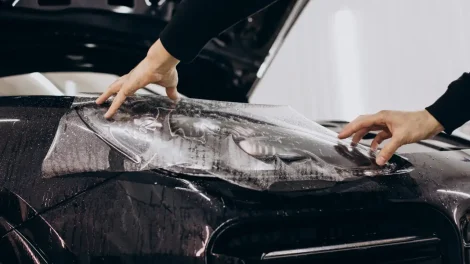A stiff steering wheel means there is a problem. Driving can be hard and unsafe. Not addressing stiffness can cause bigger issues with steering or suspension. Knowing the causes and solutions keeps the vehicle safe. Service centers provide various levels of care for stiffness problems. These tiers help clients with checks and repairs. This progression helps drivers pick the right service early.
Reasons for a stiff steering wheel
Low power steering fluid can cause stiffness in the steering wheel. This fluid makes steering easy and smooth. Low or old fluid makes steering hard to turn. A failing power steering pump is another cause. The pump moves the fluid. It helps with steering. The pump wears out. Stiffness increases a lot. Ball joints and tie rods can cause stiffness. These parts connect the wheels to the steering. They help with smooth movement. They create resistance. The steering feels stiff. Low pressure tires or uneven wear make the problem worse. They increase rolling resistance. Finding these causes early stops bigger problems later.
Basic Service: Check and refill power steering fluid
The first tier looks at easy fixes, such as checking fluid levels. Technicians check the power steering fluid. They look for the right levels and any contamination. If the fluid is low, refill it with the right type. Old fluid is removed. New fluid is added to boost performance. This service includes checking fluid lines for leaks. Fix leaks early. It stops sudden fluid loss and stiffness. This tier is for drivers who feel mild stiffness or resistance. This is the cheapest and fastest way to fix steering.
Power steering pump and hose check
The second tier inspects the mechanical parts of the power steering system. Technicians check the power steering pump for wear or failure. They listen for strange sounds. These sounds can mean pump issues. Check hoses and belts for cracks or looseness. Damaged hoses can leak. This reduces system pressure and increases stiffness. This tier tests the steering system pressure. It checks for pump performance issues. Fixing or changing broken pumps and hoses helps fluid flow again. This service helps drivers with stiffness or noise issues. The steering system stays reliable and responsive. Going for the Auto Repair in Blue Springs, MO based service would be essential here,
Service Tier: Check Suspension and Steering Linkage
The third tier looks at suspension parts that impact steering feel. Technicians check ball joints. They check tie rods, control arms, and bushings for wear or damage. These parts help the wheels move smoothly. They also absorb shocks from the road. When they are damaged, steering becomes stiff or jerky. This service tier replaces worn suspension parts. It helps restore flexibility. Technicians check wheel alignment. Bad alignment makes steering harder. Suspension repairs help the vehicle handle better. They also reduce steering fatigue. This tier fits vehicles that stay stiff even after power steering fixes.
Steering system check and fix
The top tier includes a full check of the steering system. Technicians check the steering rack column and electronic controls with tools. This service finds hidden faults. It helps with stiffness and uneven steering response. Repair work includes fixing or replacing steering racks. It also involves electronic power assist systems and calibration. Full system care keeps steering smooth and reliable in all conditions. Clients get clear reports. These explain the condition and suggest maintenance. This tier is for modern cars with complex steering or long-term stiffness issues. It offers a complete solution.



